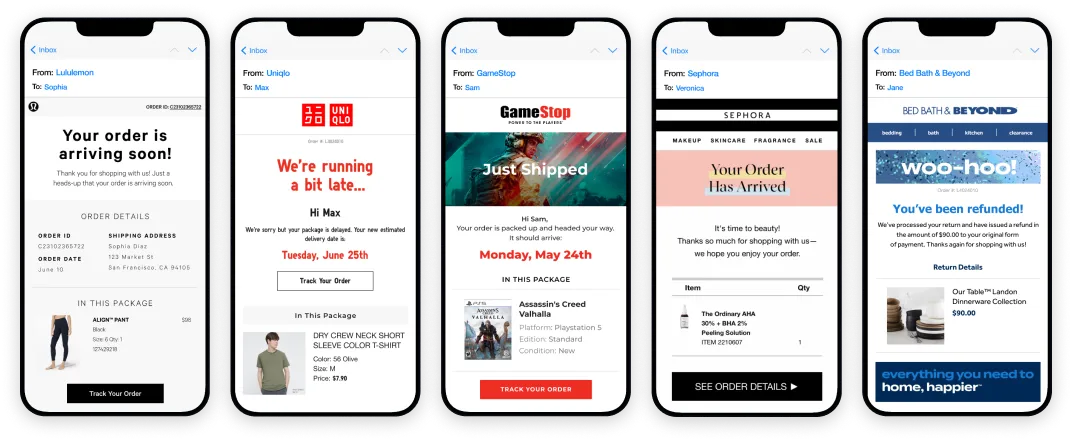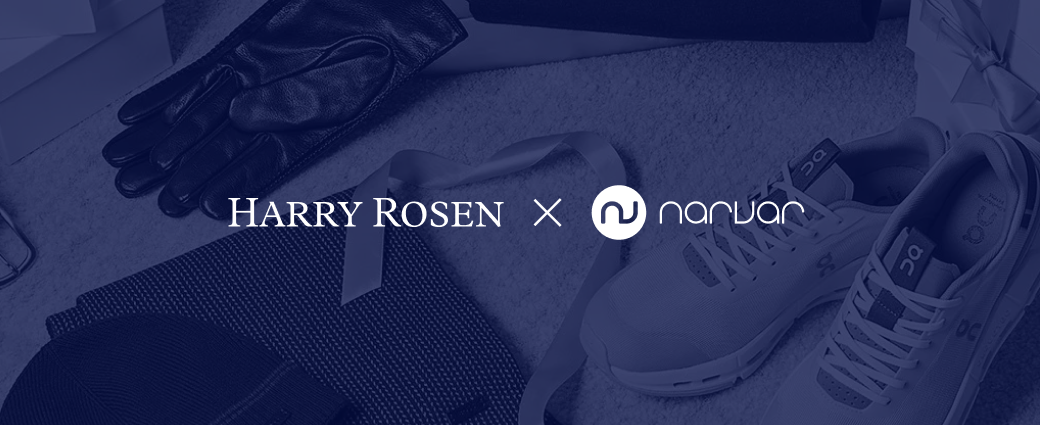
AI-powered delivery date estimates to boost conversion
Give shoppers peace of mind and protect and grow your bottom line
Personalized tracking experiences to build brand loyalty
Returns and exchanges management to mitigate fraud and reward best customers
Proactive communication to drive customer lifetime value
Delivery claim management to tackle fraud and build trust
How to Communicate Throughout the Customer Journey

Retention is one of the most efficient ways a retailer can cut costs and increase profits: Even a 5% increase in customer retention can increase a retailer’s revenue 25-95%. Whereas the likelihood of conversion with a new customer is between 5% and 20%, it’s 60-70% with an existing customer.
It’s time to reimagine the customer journey with retention as the primary objective, and that starts with better communication. In this article, we’ll be detailing what loyalty-building communication looks like throughout the customer journey.
Pre-purchase communication
A customer should be able to quickly and easily find everything they want to know about the item(s) they’re considering, shipping, and returns on the retailer’s website. In many cases a retailer can include all of that information on the product description page (PDP). That includes:
- Detailed product photos
93% of shoppers consider photos “important” or “very important,” and 25% of ecommerce photos lack sufficient resolution for shoppers to properly zoom and view the product. Photographs should feature each product from a variety of angles and include close-up shots of design details.
- Robust product descriptions
Include specifics like color, measurements, material composition, finishing details, care instructions, country of origin, and sustainability.
- Customer reviews
Studies show that customer reviews can “reduce the risk of mismatch” between a customer’s expectation for the product and reality, and that retailers who include a “star rating” of 3 or higher on product detail pages see more purchases than retailers who don’t include a star rating. Additionally, 72% of ecommerce shoppers want to see real customers’ images and more sizing and fit information.
- Estimated delivery dates
Nearly half of U.S. consumers will abandon an online transaction if their delivery concerns are not addressed, and 60% of shoppers are more likely to choose a retailer that can tell them the exact date a package will arrive at the time of order.
- Basic return information
If an item is returnable, include the general terms in the product description or near the “Add to Cart” button. (Example: Shop with confidence. Free returns within 30 days.) If an item is final sale, it should be clearly indicated on the PDP.
In addition to listing this information on the product page, details like expected shipping timelines, return policies, and final sale notations should be included in the customer’s cart review process—providing a final reminder before the purchase.
Post-purchase tracking updates
A customer should receive confirmation and tracking emails with the relevant fulfillment and return information for their order after completing the purchase. Initial communications should include the same confirmation details from the cart confirmation phase:
- When the order will be delivered
- If an item is backordered, when it is projected to ship
- Duration of the return window
- Return instructions
- Cancellation instructions.
Branded tracking pages are another critical post-purchase communication channel because they allow retailers to retain control over their post-purchase experience. Operating as the dynamic informational headquarters for the purchase, a branded tracking page connects the customer directly to the latest disposition of the order—regardless of which email or text the customer used to access the page link.

Shipment and delivery confirmation
Customers are more dialed-in to their relationship with the retailer while waiting for an order to arrive. Narvar data shows that transactional emails have much higher open rates than marketing emails, and package-tracking emails alone carry an open rate of approximately 70%.
First, customers are excited, or perhaps anxious, about their order. Second, they want to see if the retailer will meet expectations.
Retailers should plan to send the customer updates about the order’s shipping progress when the order is received by the carrier, the day before delivery, and upon delivery. If a delay occur, notify the customer right away: 98% of consumers say they feel better about a retailer who immediately notifies them if something goes wrong.
Each of these points of communication can reinforce a positive relationship, and give the customer time to make alternate arrangements if they can no longer receive the order at the shipping address. In the delivery confirmation, specifically, it’s important to highlight return and review instructions for the customer.
Return updates
Returns are part of the retail landscape, no matter how hard a retailer works to avoid them. Between 20% and 30% of online purchases are returned each year, but 95% of customers who are satisfied with a retailer’s returns process will purchase from that retailer again.
Retailers should make online returns fast and painless, and gather information about the reasons for the return during the return initiation process. Feedback about details like fit and quality can help retailers make more informed planning decisions in the future, or even make real-time adjustments to PDPs.
Much as customers are on high alert when waiting to receive their purchase, they’re also engaged when waiting for a refund. Once a return is underway, customers expect a refund or exchange to be processed within 30 days. Thanks to instant refunds and credits popularized by Amazon, many ecommerce customers expect their money even faster—in a matter of days or hours.
For retailers that cannot implement instant refunds, automated “Where Is My Return?” (WISMR) communications are critical for keeping customers happy and reducing retailers’ overhead costs. (Retailers that offer a branded tracking portal can also use these to track returns.) In WISMR communications, the best practice is to notify customers by text or email:
- When the return is received by the carrier
- When it reaches the warehouse
- When their refund is issued
Some retailers choose to do all three.
Requests for reviews
Feedback communications are the final “stop” on the customer order journey. Whether a customer loves or hates their purchase, reviews close the loop on the transaction, and boost future sales of the same product. Reviews can also help retailers identify their most engaged customers, and reach out to them with loyalty discounts and targeted marketing campaigns.
In addition to sending a final feedback message for the order, include a review link on the branded tracking page. Consider incentivizing customers to leave reviews—especially those with photos—by offering tiered “thank you” discounts for their time. For example, a retailer could reward a general star-rating review with $5 off a future purchase, a star-rating plus comment review with $10 off, and offer a $20 gift card for a review with rating, commentary, and photos.
Final thought
Instead of approaching the path between brand awareness and conversion as a linear voyage that ends in a single transaction, retailers should be taking steps to create a repeatable loop—luring an existing customer back again and again. Retailers win when they build customer loyalty, and that loyalty starts with communication.
























